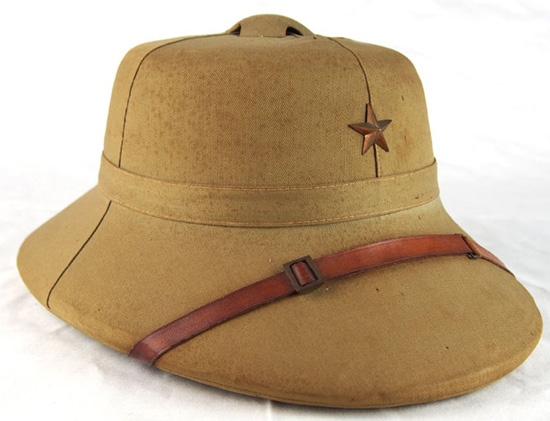
With the fall of Hong Kong on December 25, 1941 and Singapore on February 15, 1942 the British suffered two of its greatest setbacks in the Far East during World War II, with the latter being described by Prime Minister Winston Churchill as the “worst disaster” in British history.
Some 80,000 men were captured at Singapore and untold equipment with it. Today it is possible to encounter British sun helmets (and even steel helmets) that were possibly captured by the Japanese in either Hong Kong, Singapore or in the later invasion of India. However, as it is all too easy to add a Japanese cap star to a helmet these should be viewed with suspicion at the very least. One has turned up that does have all the right signs that indicate that it is likely the “real deal.”
The khaki sola pith helmet was the official replacement of the British Wolseley sun helmet in India. Introduced at the beginning of the 20th century by 1938 this pattern was picked as a more affordable option to the British-made cork helmets. These helmet were used throughout World War II, and many featured a unit flash on the side.
This helmet pattern also entered service in time to see use in the Middle East and in the Mediterranean. Many khaki sola pith helmets were captured at Crete and used by the German military in Greece. Other examples were captured in Singapore and Burma in 1941/42 and used by the Japanese. These helmets were considered prize trophies.
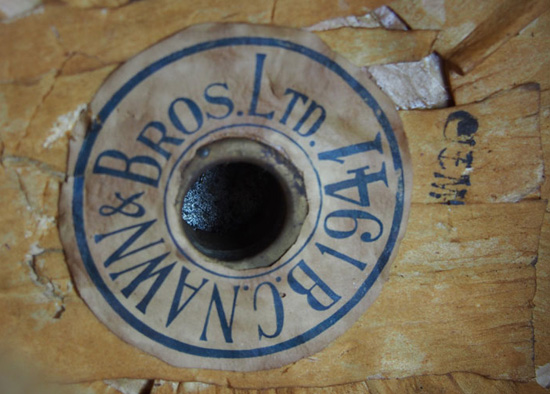
The helmet’s interior shows the maker label with 1941 date and the broad arrow War Department stamp (Author’s Collection)
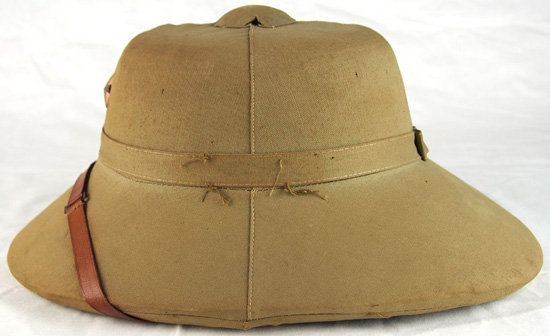
A side view of the helmet shows that a flash was likely sewn to the side, but was removed at some point. (Author’s Collection)
This example owned by the author could be one of the helmets captured in Singapore or Burma. It features thread on the left side, which is where a flash may have been affixed. The helmet is dated 1941 and features the British “broad arrow” War Department stamp, which suggests this helmet was in fact a war time helmet – and this pattern was known to have been used in Singapore and Burma in 1941.
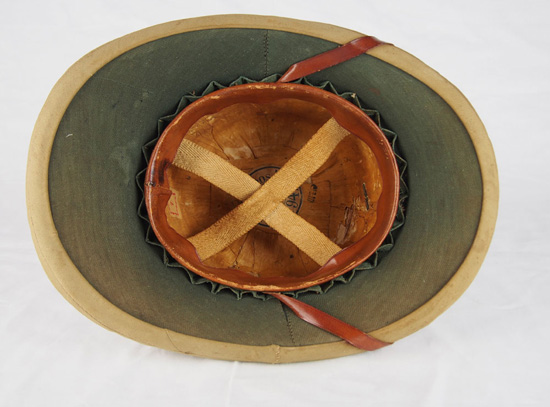
The interior of the helmet. The helmet shows “honest” wear and the star seems to have been added some time ago. (Author’s Collection)
On the front is affixed a Japanese cap star, which appears to have been on the helmet for a long time. There seems be slightly lighter fabric under the exposed part of the star so it is the opinion of the author that this could likely have been period done. Moreover the lack of notable difference in color where a flash may have been worn also suggests that such flash wasn’t present for that long. It wouldn’t have been out of a character for a Japanese NCO or officer to keep the loose treads as a reminder to British POWs or even his own troops that such helmet was in fact a war trophy.
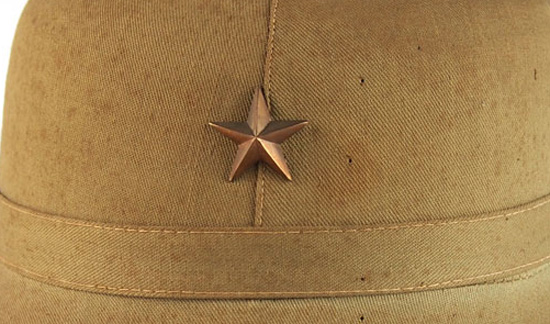
While it can’t be said with absolute certainty that this helmet was captured by a Japanese soldier it shows honest wear that indicates that it likely saw some use in World War II, and possibly an adventure or two.
